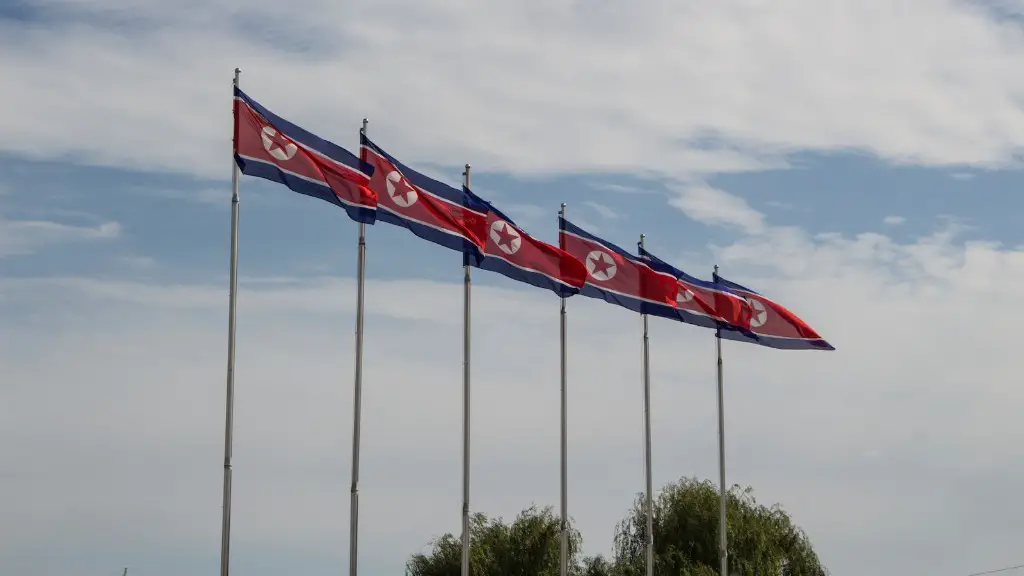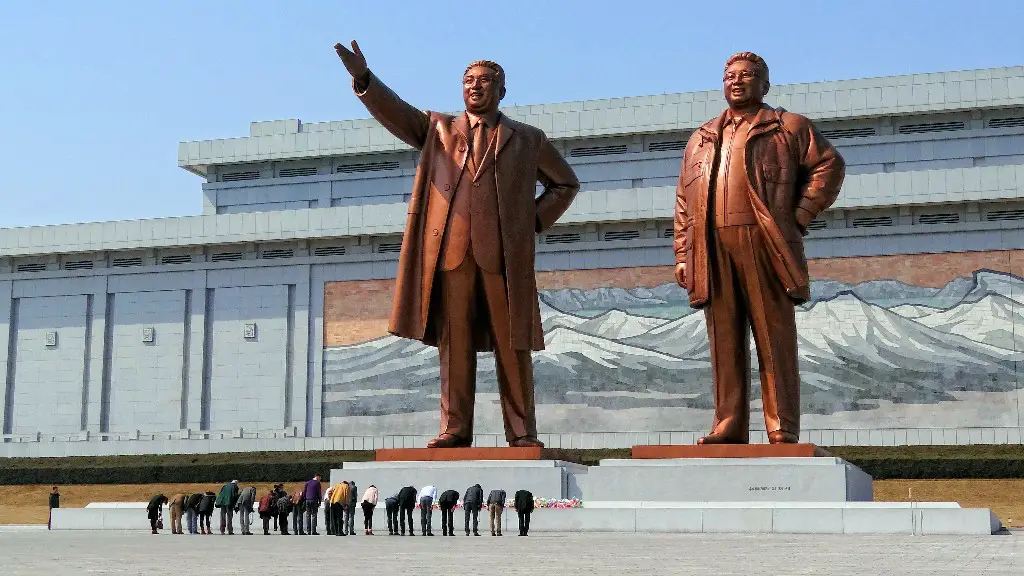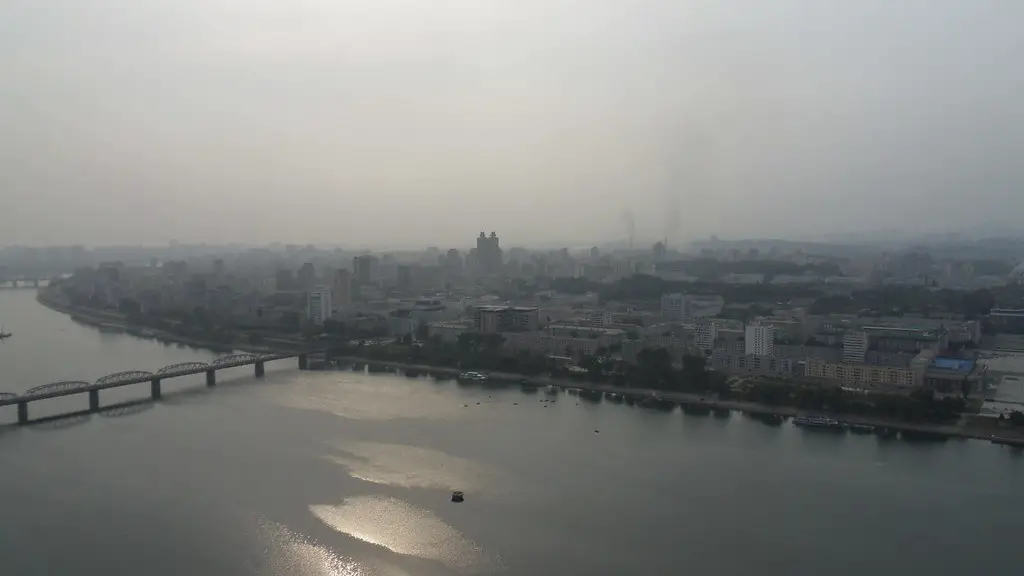Overview
North Korea is a small country in East Asia, bordering South Korea, China, and Russia. With its oppressive regime, North Korea is one of the most secretive nations in the world. Little is known about its military capabilities, and even fewer facts exist regarding the size of its military forces. International sanctions and an isolated economy have left North Korea unable to modernize its defense forces and equip them with the latest technologies. Despite these handicaps, North Korea’s military capabilities remain a matter of debate for security experts.
Size of North Korea Military
Estimates by the International Institute for Strategic Studies (IISS) suggest that North Korea has about 1.28 million active duty personnel, making it the fourth-largest military force in the world, behind China, the United States and India. According to the IISS, North Korean forces include 1.1 million army personnel, 60,000 navy staff, and 200,000 air force personnel. North Korea also has a well-developed paramilitary force, the Korean People’s Internal Security Force, estimated to have around 200,000 personnel.
Military Allocation and Expenditures
In terms of military size and budget, North Korea has the dubious distinction of being the most militarized country in the world. North Korea’s military accounts for 17 percent of its gross domestic product (GDP). To put this figure in perspective, the US’ military budget accounts for 3.7 percent of its GDP, while the figures for India and China are 3.2 and 2.1 percent, respectively.
Military Doctrine
North Korea’s military doctrine is based on the principle of offensive defense. This strategy relies on pre-emptive attacks to achieve strategic goals, and the country maintains a policy of maintaining a stronger military than its adversaries. The military operates with a set of guiding principles known as the ‘military first’ doctrine. This policy emphasizes building military power and strength, while also allowing for economic development.
Weaponry and Technology
North Korea has a formidable arsenal of conventional and non-conventional weapons. Its arsenal includes ballistic missiles, chemical weapons, nuclear weapons, and submarines. North Korea is also developing intercontinental ballistic missiles (ICBMs) that could potentially reach the US mainland. North Korea’s nuclear weapons are the most advanced and powerful in its arsenal and the technological sophistication behind them is considered to be on par with US military technology.
In terms of technology, North Korea 8 lacks heavily in comparison to South Korea and the US. Much of North Korea’s military activity is facilitated by outdated and obsolete equipment. Its citizens are not allowed internet access, and the country does not possess the same level of satellite intelligence gathering capabilities as its adversaries.
Impact on the Region
The size of North Korea’s military has caused alarm in many of its neighboring countries, such as South Korea and Japan. These countries are particularly concerned with the threat posed by North Korea’s nuclear and ballistic missiles programs, and ther fears of these weapons being used as a means of intimidation and coercion are legitimate.
The threat posed by North Korea’s military has led many in the international community to call for increased diplomatic efforts to mitigate the risk of war and conflict in the region. The US, for instance, has proposed the denuclearization of North Korea through a series of bilateral negotiations and agreements.
Sustainability of North Korea Military
Despite North Korea’s limited resources and technological capabilities, the military has survived and sustained itself for decades. This is largely due to North Korea’s policy of self-reliance, or Juche, which emphasizes absolute control and state-planned economic development. North Korea’s leadership also maintains strong control over its military forces and has been adept at manipulating international organizations and countries.
The associated international sanctions, however, have placed strain on North Korea’s resources and capabilities, leading to speculation that the nation’s military will be eventually unable to sustain itself. This is a hope shared by many in the international community, and a decline of the North Korean military power could help ease regional tensions and reduce the risk of conflict.
Innovative Tactics
In recent years, North Korea has been able to offset the economic strain and lack of resources with innovative tactics. In particular, North Korea has invested heavily in asymmetrical capabilities such as cyber warfare and unconventional tactics. These tactics have been effective in exploiting weaknesses in their adversaries and have proven successful in intrusive operations.
North Korea’s leadership has also invested in military education and training. North Korea’s conscription program is notoriously long and rigorous and the country has a long history of producing some of the world’s most accomplished military strategists and tacticians.
Support from China and Russia
In recent years, North Korea has also received significant support from China and Russia. China, particularly, has provided economic aid, investment and military training to North Korea in exchange for political loyalty and military intelligence. Russia, for its part, has given political support and provided weapons and resources to North Korea.
These external powers have allowed North Korea to boost its military capabilities and sustain its operations. Though their support has obviously benefited the North Korean military, their influences remain limited and often get trumped by domestic considerations, such as the leadership’s pursuit of military autonomy and self-sufficiency.
Military Defections
Recent defections and reports indicate that North Korea’s military is severely weakened and exhausted. Most of the country’s military personnel suffer from poor morale and a lack of resources. Many are also deeply concerned with the repressive nature of the Kim regime and have defected in the hopes of finding better treatment elsewhere.
These defections have provided insight into the state of the North Korean military, painting a bleak picture of a deterrence capability that has been crippled by sanctions and isolation from the world. These defectors also provide a window into the regime’s constant repression, which is especially notable in the case of its powerful military forces.
Public Perception
North Korea’s military is a source of great pride to its citizens and is a powerful symbol of the nation’s strength. The regime’s official rhetoric emphasizes the invincible nature of the North Korean forces and North Korea’s citizens are regularly exposed to propaganda that portrays their military as invincible and capable of defending the country from all enemies.
The veracity of this rhetoric is highly questionable, however and it has been stated that the regime’s focus on military strength is more a means of maintaining control of its own people than of defending the nation from outside threats. Thus, the North Korean military is viewed by the international community as a potential threat, but its capabilities remain largely unknown, and North Korea’s true intentions remain a mystery.


